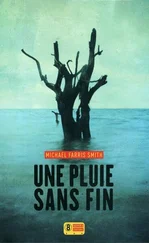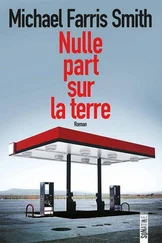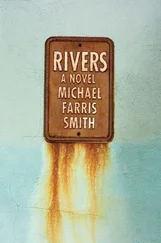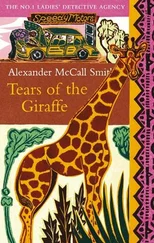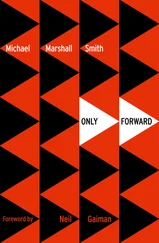She had not seen him for two years; her photograph had appeared in Rural Living during her last year at Oxford Brookes and then there had been the gap year in New Zealand looking after the children of a family who lived in Auckland (whose fifteen-year-old son had made a pass at her; fifteen! ). Now here she was doing her Master’s in Fine Art, sitting in a lecture on seventeenth-century Dutch painting, and a photographer whom she barely knew - and rather disliked - suddenly came into her mind. It was odd, but that was how the human mind was: a Proustian-Jungian soup of random memories and associations.
Proustian-Jungian; she rather liked the term, and might use it in one of her essays. She was overdue with one of them - a discussion of influences in Veneto-Cretan painting - and she was finding the going rather difficult. There was a literature on the subject but a lot of it was in German, and Caroline’s German was almost non-existent. She could ask the way to the station, perhaps, in that language, and had indeed once done so in Frankfurt, only to be answered in perfect, almost non-accented English. But when it came to influences in Italian art, it was a different matter.
The Proustian-Jungian line would certainly help. She had been looking at a photograph of a small Veneto-Cretan treatment of the birth of the Virgin Mary, a popular theme in the art of the time. In this painting, the Virgin Mary’s mother was lying in a large four-poster bed, across which a rich, brocaded green cover had been draped. The mother was composed, and was being served a tray by a serving girl, next to whom was standing a saint, his halo providing a measure of illumination for the eating of the meal on the tray. In the foreground a group of angels stood around the newborn babe, who was, curiously enough, already standing, at the tender age of a couple of hours, although admittedly lightly supported by another serving girl, or early au pair perhaps.
It was the reading of the painting that was all-important, and only the naive would see this painting as being simply about the birth of the Virgin Mary. There was far, far more to be gained from looking at it closely, but . . . what exactly? That was the difficulty.
Her thoughts, however, were interrupted by the voice of their lecturer, who had pressed the button to bring a fresh slide to the screen. Thoughts of the Veneto-Cretan were replaced by thoughts of the Dutch Golden Age and the significance of light.
‘These paintings,’ said the lecturer, a small man in a velvet jacket, ‘are really about water, because whenever a Dutch artist paints land, he is really painting land as seen through the water that suffused the very air about him. It is this omnipresence of water that gives to the light of that period its particular quality. As we see here in this landscape by Pieter de Hooch. See. Here and here. And here.’
Caroline felt herself becoming drowsy. It was warm in the lecture theatre, and she had woken up rather early that morning. The Dutch light, she felt, was soporific; it had perhaps had that effect on de Hooch as he sat at his easel all those years ago.
She felt a gentle dig in her ribs. ‘Don’t go to sleep,’ her neighbour whispered. ‘Poor Dr Edwards will be very offended if he sees you. But he is boring, isn’t he?’
She half turned to the young man sitting beside her. He had started taking notes at the beginning of the lecture but now appeared to have stopped. James was a special friend of hers; they often sat next to one another in lectures, lent each other notes, and went off for coffee together. He was easy company, amusing and undemanding and, most importantly, quite unthreatening to women.
‘I can’t help it,’ she whispered back. ‘His voice . . .’
James patted her forearm. ‘Quite. But listen, I need to talk to you. Have you got a moment after this?’
‘Of course.’ She hesitated. ‘A problem?’
He put a finger to his lips. Dr Edwards was looking in their direction. ‘Wait,’ he said. ‘Afterwards.’
At the end of the lecture they left the lecture room together, abandoning a small knot of members of the course who wanted to take up with Dr Edwards some point about the Dutch Golden Age. Coming out of Bedford Square, they went into the coffee bar off Tottenham Court Road where, at any hour of the day, they knew they could always find a table.
‘So,’ said Caroline. ‘What’s up? Have you got an interview? Or even an offer?’ James was applying for jobs at various galleries and had been passing on to her the woes of his fruitless quest.
He shook his head. ‘Nothing like that. Actually, this is a personal issue. I don’t want to burden you . . .’
‘Listen,’ she said. ‘Who’s your best friend on this course? Me. And what are best friends for? To be burdened. So . . .’
He looked at her gratefully. ‘I couldn’t talk to anybody else about this,’ he said. ‘It’s not the sort of thing . . . well, it’s not the sort of thing I’ve found very easy to talk about. Ever.’
She nodded. ‘I can imagine . . . Not that I know what it is, of course, but if I did, then I’m sure I’d see what you mean.’
James toyed with the spoon that the barista had placed beside his caffe latte. ‘It’s not easy.’
‘No.’
‘Well, you see, it’s about me. About who I am. About what I feel.’
Caroline looked at him encouragingly. ‘For most of us, that’s quite an important issue. Yes?’
He looked at her. ‘Caroline, you do know that I’m . . . well, you know that I’m . . . you know . . .’
She laughed; this was hardly a disclosure. James, after all, had admired the paintings of Henry Scott Tuke - more than once. ‘But of course. And so what? Surely that’s not an issue.’
‘No, it isn’t. Except that . . . well, except that I think I’m not . . . you know.’
Caroline frowned. ‘You’ve just discovered that you like . . . girls?’
James sighed. ‘Yes. I think I may be straight. Here I am at twenty-two, committed to art history, and discovering that I may be straight. How bad is that?’
‘Now, that is a problem,’ agreed Caroline.
8. The Merits of Italian Wine (or some of it)
While Caroline sat in the coffee bar with James, listening to his unexpected and unsettling disclosure, William was busy taking delivery of a large consignment of Brunello di Montalcino, eighteen cases in all, of which seven were already promised to clients and three were semi-promised. A semi-promise was where the client said that he would take something and the merchant said that he would set it aside, both knowing that neither meant it. Failure to take up a semi-promise had no consequences for the client but he could nonetheless treat such a failure as cause for minor umbrage - mild disappointment, perhaps, that something he might have wanted had been sold. But there were limits to this umbrage and if the merchant thought these limits had been surpassed, he could come back with a remark about making firm orders in future. Clients who traded in semi-promises did not like firm orders and would usually let the matter drop at that point.
William’s assistant, Paul, a young man of nineteen, was late that morning and came in to find William stacking the last of the cases of Brunello. William looked pointedly at his watch and then at Paul, who was dressed in the outfit that he wore every day - denim jeans and a T-shirt of a colour somewhere between grey and white. He wondered whether it was always the same pair of jeans and the same T-shirt, but it was difficult to tell. Paul seemed clean enough to him and was never, as William put it when commenting on the unwashed who appeared to circulate in London, ‘slightly off’. Indeed, Paul wore something, some cologne or aftershave, that had a pleasant, slightly sandalwood tang to it. William had once discovered a bottle of white wine from the Veneto which seemed to have exactly the same nose to it as Paul’s cologne. He had called out to Paul, ‘My goodness, Paul, this Italian white smells exactly like—’ And had stopped himself before he said you . One man - even a new man , which William would claim to be - did not comment to another man on how he smelled; there were taboos about this, and the most that any man could do of another was to wrinkle his nose slightly, or perhaps waft the air in front of his nose with a hand - a gesture into which all sorts of alternative and innocent meanings could be read.
Читать дальше

